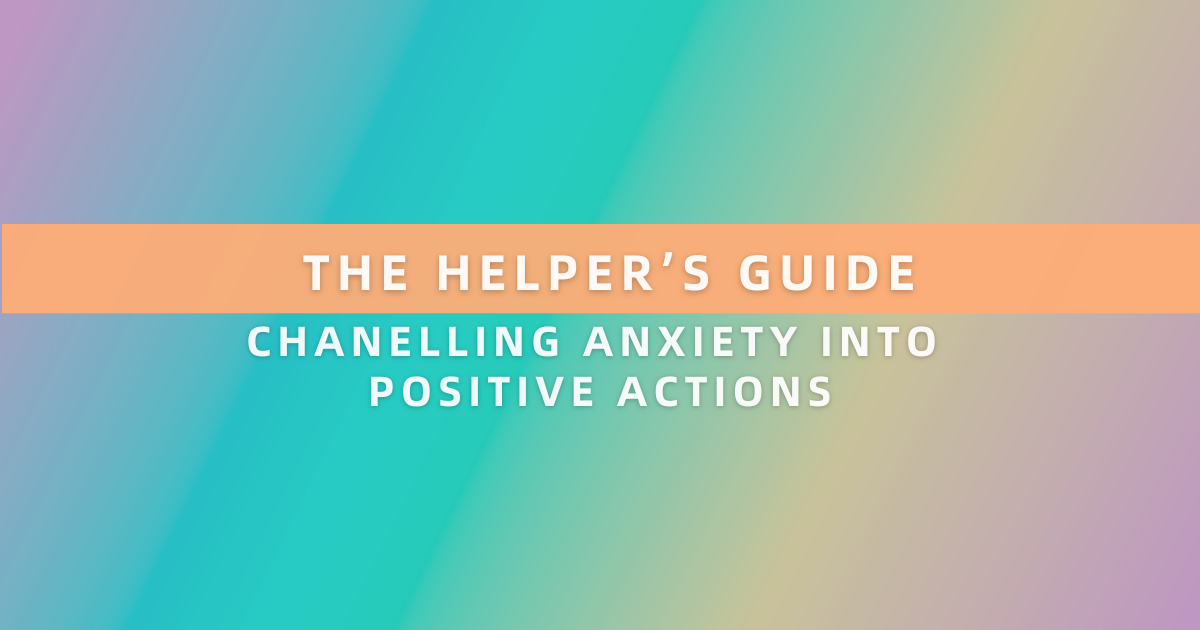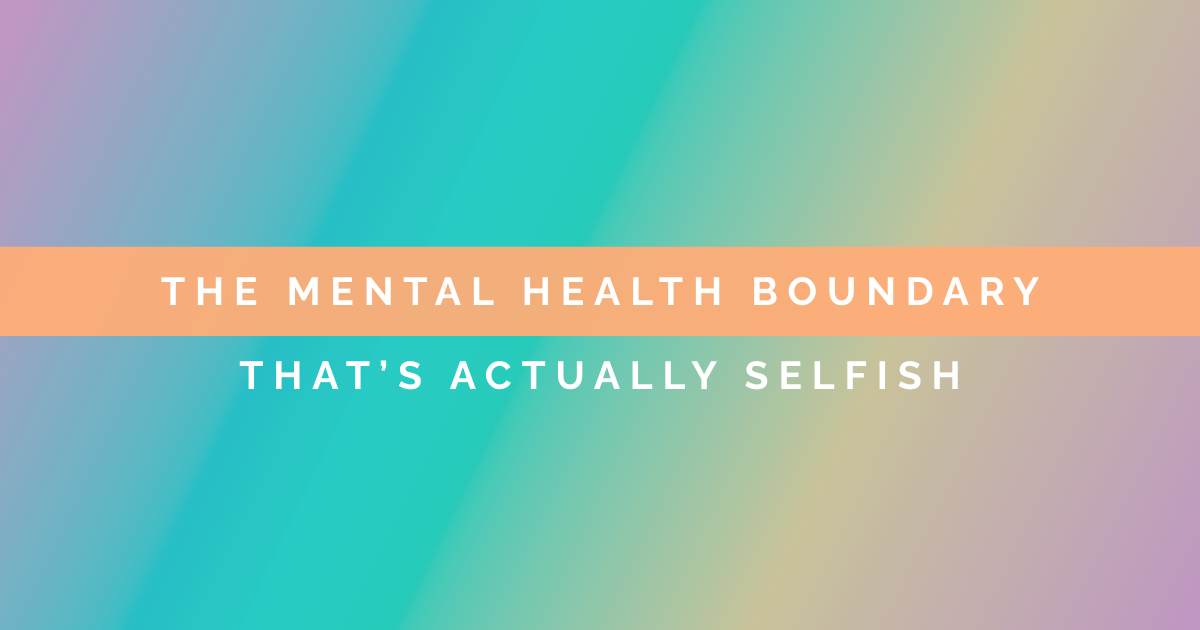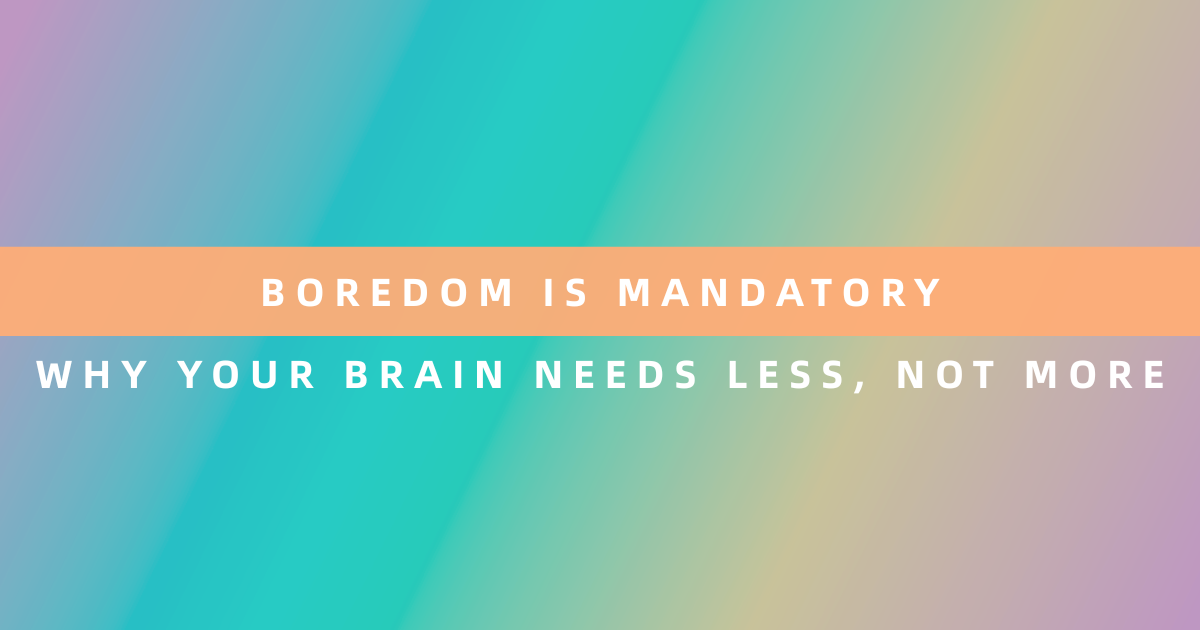Another crisis. Another injustice. Another cause demanding immediate attention. Many people find themselves caught in an exhausting cycle where every scroll through social media reveals new problems that need solving, new communities that need support, and new emergencies that require immediate action.
This constant exposure to global suffering creates a unique form of modern anxiety. You want to help everyone, fix everything, and make a difference wherever possible. Yet the sheer volume of need can leave you feeling paralyzed, guilty, and emotionally drained.
The desire to help others represents one of humanity’s most beautiful impulses. However, when this impulse becomes a source of chronic stress and anxiety, it stops serving anyone effectively. Learning to channel your caring nature into sustainable, meaningful action protects both your mental health and your ability to create genuine positive change.
The Mental Health Impact of Constant Concern
Research shows that prolonged exposure to negative news and social issues can trigger what psychologists call “headline stress disorder.” This condition manifests through symptoms similar to other anxiety disorders: sleep disruption, difficulty concentrating, irritability, and a persistent sense of impending doom.
The psychology behind helper anxiety runs deeper than simple overwhelm. People with strong empathetic tendencies often experience what researchers term “empathic distress” when exposed to others’ suffering. This emotional mirroring can become so intense that it interferes with daily functioning and decision-making.
Social media amplifies these effects by creating an illusion of urgency around every issue. The constant stream of causes, crises, and calls to action creates what mental health professionals describe as “cause fatigue.” Your brain begins treating every problem as equally urgent, making it impossible to prioritize or take effective action on any single issue.
The guilt component adds another layer of complexity. Many helpers experience shame when they cannot respond to every need or when they choose to focus on some issues while ignoring others. This guilt often prevents people from taking any action at all, creating a cycle where caring too much leads to helping too little.
Understanding these psychological patterns represents the first step toward developing a healthier relationship with helping others. When you recognize that your anxiety serves as a signal rather than a mandate, you can begin transforming that nervous energy into purposeful action.
Identifying What You Can Change
The most anxious helpers often struggle with what psychologists call “spheres of influence confusion.” They attempt to control outcomes far outside their actual power while neglecting areas where they could create meaningful change.
Your sphere of control includes your actions, decisions, responses, and immediate environment. This sphere encompasses how you treat others, where you volunteer your time, how you spend your money, and what skills you develop to help others.
Your sphere of concern includes all the issues you care about, from local homelessness to global climate change to international conflicts. These issues matter deeply, but most exist outside your direct control.
The key to channeling anxiety productively involves focusing your energy on the overlap between these spheres. Start by listing the issues that cause you the most worry. Then, honestly assess which aspects of these problems you can directly influence through your actions, skills, resources, or relationships.
For each concern, ask yourself specific questions: What organizations in your community address this issue? What skills do you possess that could contribute to solutions? What financial resources can you realistically dedicate to this cause? What time commitment can you maintain without sacrificing your well-being?
This process often reveals surprising insights. People frequently discover they can create more impact by focusing intensively on one or two causes rather than spreading their attention across dozens of issues. The concentrated approach allows for deeper learning, stronger relationships, and more sustainable engagement.
Consider also the concept of “leverage points,” where small actions create disproportionate positive outcomes. Teaching one person a valuable skill, supporting one local organization consistently, or advocating for one specific policy change often generates far more impact than sporadic involvement in multiple causes.
Finding Your Local Impact Zone
Local involvement offers unique advantages for anxious helpers. Geographic proximity allows you to see the direct results of your efforts, build meaningful relationships with fellow volunteers, and understand complex issues at a human scale rather than through media abstractions.
Community needs assessment begins with simple observation and conversation. Walk through different neighborhoods in your area. What problems do you notice? What resources seem lacking? Talk to local business owners, teachers, and community leaders about their biggest challenges.
Many communities maintain volunteer matching services through libraries, religious organizations, or municipal websites. These resources help connect your specific skills with existing needs. Food banks need people with organizational abilities. Literacy programs need patient teachers. Environmental groups need people comfortable with outdoor work.
Skills-based volunteering often creates more satisfaction than general helping because it utilizes your existing strengths while building new capabilities. If you work in marketing, local nonprofits need communication support. If you enjoy cooking, homeless shelters need meal preparation volunteers. If you have financial skills, community organizations need bookkeeping assistance.
Time commitment flexibility represents another advantage of local involvement. Many community organizations need both regular weekly volunteers and people available for special events or seasonal projects. This flexibility allows you to match your helping activities with your mental health needs and life circumstances.
Start small with local involvement. Commit to one organization for a specific period, such as three months. This timeframe allows you to learn about the issue, understand the organization’s culture, and assess whether this particular form of helping suits your personality and schedule.
Document your local involvement experience through journaling or informal reflection. Notice which activities energize you versus those that drain your emotional resources. Pay attention to the relationships you build and the skills you develop. This self-awareness helps guide future volunteer decisions and prevents overcommitment.
Building Sustainable Helper Habits
Sustainable helping requires the same principles as sustainable exercise or eating habits. Consistency matters more than intensity, and small regular actions often create more impact than sporadic bursts of activity.
Energy management starts with an honest assessment of your emotional and physical resources. Some people naturally have more energy for direct service roles, while others contribute best through behind-the-scenes support. Some volunteers thrive on crisis response, while others prefer steady, predictable helping activities.
Boundary setting protects both your well-being and your effectiveness. Establish clear limits around time, emotional investment, and financial contributions before you begin any helping activity. Communicate these boundaries clearly to organizations and stick to them even when pressured to do more.
Many sustainable helpers follow what researchers call the “oxygen mask principle.” Just as airplane safety instructions direct passengers to secure their oxygen masks before helping others, effective volunteers prioritize their own mental health and basic needs before extending help to others.
Skill development transforms helping from an emotional burden into an engaging challenge. Choose volunteer opportunities that allow you to learn new abilities or strengthen existing ones. This growth mindset keeps you engaged while increasing your value to the organizations you support.
Team collaboration reduces individual pressure while multiplying impact. Look for volunteer opportunities that emphasize group efforts rather than individual heroics. Working alongside others provides emotional support, shared knowledge, and built-in accountability.
Recovery time must be built into any sustainable helping routine. Schedule specific periods for rest, reflection, and activities unrelated to helping others. This recovery time prevents burnout while allowing you to process your experiences and maintain perspective.
Consider seasonal approaches to volunteering. Some people concentrate their helping activities during specific months each year, allowing for intense involvement followed by recovery periods. Others prefer steady year-round engagement with reduced intensity.
Protecting Yourself from Burnout
Helper burnout manifests through emotional exhaustion, cynicism about the possibility of positive change, and a decreased sense of personal accomplishment. These symptoms often develop gradually, making early recognition crucial for prevention.
Warning signs include dreading volunteer activities you once enjoyed, feeling resentful toward the people you help, experiencing physical symptoms like headaches or sleep problems after helping activities, and finding yourself increasingly critical of other volunteers or organizations.
Emotional boundaries require conscious development and maintenance. Practice separating your worth from the outcomes of your helping activities. You can provide excellent support while accepting that you cannot control whether people accept help or how organizations use your contributions.
Many burnout-prone helpers benefit from what psychologists call “cognitive restructuring.” This involves replacing thoughts like “I must solve this problem” with more realistic thoughts like “I can contribute to solutions while others handle different aspects of this issue.”
Support systems become essential for people engaged in regular helping activities. Connect with other volunteers who understand the emotional challenges of caring work. Many communities have support groups specifically for people involved in social service activities.
Professional mental health support provides valuable tools for managing helper anxiety and preventing burnout. Therapists experienced in working with caregivers and volunteers can teach specific techniques for emotional regulation and boundary setting.
Digital tools can support burnout prevention by helping you track your emotional state and volunteer activities. AI-powered mental health platforms like Theryo offer daily check-ins and personalized insights that help you recognize patterns in your emotional responses to helping activities.
Regular assessment of your helping activities prevents gradual overcommitment. Schedule monthly reviews of your volunteer work. Ask yourself whether each activity still aligns with your values, energy level, and life circumstances. Permit yourself to step back from commitments that no longer serve you or the organizations you support.
Measuring Your Real Impact
Anxious helpers often struggle with impact measurement because they expect immediate, dramatic results from their efforts. Realistic impact assessment requires understanding different types of change and appropriate timelines for various kinds of helping activities.
Direct impact includes the immediate results of your actions: meals served, children tutored, trees planted, or funds raised. These metrics provide clear feedback but represent only one dimension of your contribution.
Indirect impact encompasses the ripple effects of your involvement: skills you model for other volunteers, knowledge you share with community members, or connections you help facilitate between different organizations.
Personal impact includes the changes in yourself through helping activities: new skills developed, relationships built, and perspectives gained. This personal growth often enables you to contribute more effectively over time.
Long-term impact requires patience and faith in gradual change processes. Educational programs might take years to show results. Environmental restoration projects might take decades. Policy advocacy might require multiple legislative cycles.
Develop a straightforward tracking system for your assistance activities that captures both quantitative and qualitative metrics. Note specific actions taken, people impacted, and personal observations about your experiences. Review this information quarterly to identify patterns and assess your overall contribution.
Impact stories often provide more meaningful feedback than statistics. Pay attention to individual stories of change, expressions of gratitude, and moments when you witness problems being solved or situations improving. These stories remind you that your efforts matter even when broader issues persist.
Community feedback offers external perspectives on your contributions. Ask organization leaders, fellow volunteers, and service recipients for honest feedback about your involvement. This input helps you understand your strengths and identify areas for improvement.
Remember that impact measurement serves as a tool for motivation and improvement, not judgment. The goal involves understanding your contribution so you can increase effectiveness while maintaining sustainable involvement levels.
Your Next Step Forward
Transforming anxiety into positive action requires moving from overwhelming concern to focused, sustainable helping. This transformation protects your mental health while maximizing your positive impact on issues you care about deeply.
The most effective helpers start small, choose local involvement opportunities that match their skills and interests, establish clear boundaries around time and emotional investment, and build support systems that sustain long-term engagement.
Your caring nature represents a tremendous strength that can create meaningful positive change when channeled thoughtfully. The key involves focusing your energy on areas where you can create real impact while protecting your well-being through sustainable practices and appropriate boundaries.
Ready to transform your anxiety into purposeful action while maintaining your mental health? Explore Theryo’s AI-enhanced journaling tools that help you process your emotions around helping others, track your impact, and maintain the emotional balance needed for sustainable volunteer work. Your desire to help others deserves support – start your journey toward balanced, effective helping today.
Frequently Asked Questions
1. How do I choose which causes to support when everything seems urgent?
Start by identifying 2-3 issues that consistently capture your attention and emotional energy. Research local organizations addressing these issues and commit to one for a specific timeframe, like 3-6 months, before expanding your involvement.
2. What if I feel guilty about not helping with every cause I care about? Guilt about selective helping is common but counterproductive. Remember that focused involvement creates more impact than scattered attention. You serve causes best by doing excellent work in a few areas rather than mediocre work across many issues.
3. How much time should I dedicate to helping others without burning out? Most sustainable volunteers dedicate 2-4 hours per week to helping activities. Start with less time than you think you want to commit, then gradually increase involvement based on your energy levels and life circumstances.
4. How do I handle the emotional impact of seeing suffering up close through volunteer work? Develop specific emotional processing techniques like journaling, talking with other volunteers, or working with a mental health professional. Set clear boundaries around what situations you can handle and communicate these limits to organizations.
5. What if the organization I volunteer with seems ineffective or poorly managed? Give organizations a fair chance to address concerns through respectful communication. If problems persist, transition your involvement to more effective organizations rather than trying to fix systemic issues beyond your control.
6. How do I know if I’m making a real difference in my volunteer work? Track both immediate outcomes (people served, tasks completed) and longer-term indicators (relationships built, skills developed, community changes observed). Remember that meaningful change often occurs gradually and may not be immediately visible.
7. Should I donate money instead of time if I’m too busy to volunteer regularly? Financial contributions represent valuable support, but many people find that direct involvement provides better emotional satisfaction and clearer impact awareness. Consider combining modest financial support with occasional volunteer work.
8. How do I maintain motivation when problems seem overwhelming or unchanging? Focus on the specific individuals you help rather than solving entire social problems. Celebrate small victories and progress indicators. Connect with other volunteers to share experiences and maintain perspective on your collective impact.
9. What if my family or friends don’t understand my need to help others? Explain how helping activities support your mental health and personal values. Invite loved ones to join occasionally if they’re interested. Set boundaries around discussions of your volunteer work if others are consistently unsupportive.
10. How do I balance helping others with taking care of my own mental health needs? Treat self-care as a prerequisite for effective helping rather than a selfish luxury. Schedule recovery time, maintain activities unrelated to helping, and monitor your emotional state regularly. Consider professional mental health support if volunteer work consistently impacts your well-being.
11. What should I do if I experience secondary trauma from hearing difficult stories while volunteering? Recognize that secondary trauma is a normal response to exposure to others’ suffering. Develop specific coping strategies, limit your exposure to traumatic stories when possible, and seek professional support if symptoms interfere with daily functioning.
12. How do I transition away from volunteer commitments that no longer work for me? Communicate honestly with organizations about your changing circumstances or interests. Provide adequate notice for your departure and help train replacement volunteers when possible. Remember that transitioning away from unsuitable commitments allows you to contribute more effectively elsewhere.







